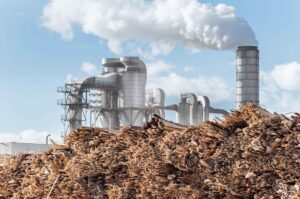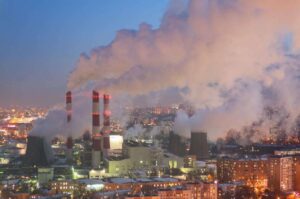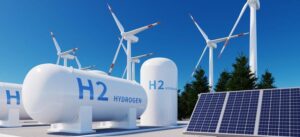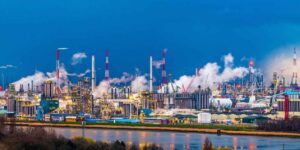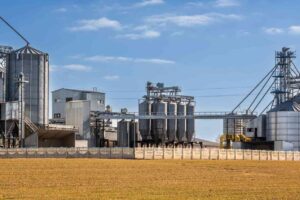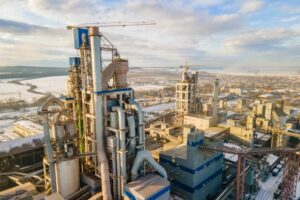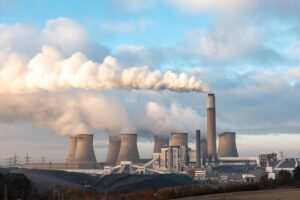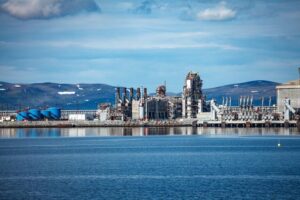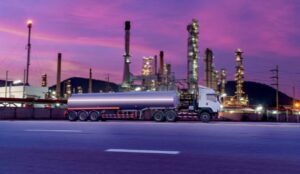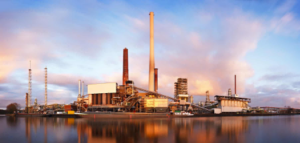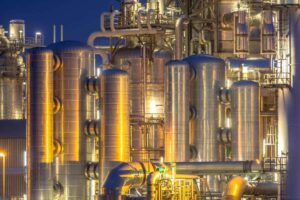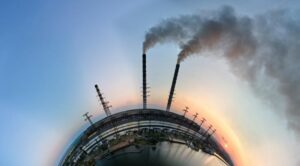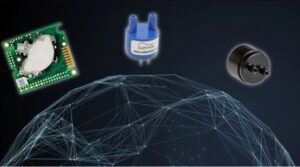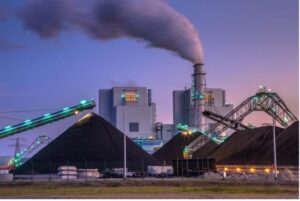In today’s industry, it is vital to monitor and control the composition of gases in the production process. Industrial process gas analyzers are a key tool in achieving this goal. These devices are widely used in industries such as petrochemical, environmental, pharmaceutical, and energy production to ensure production efficiency, environmental safety, and product quality. This blog will take an in-depth look at the definition, working principle, types, applications, as well as challenges and future trends of industrial process gas analyzers.
Definition and Importance of Industrial Process Gas Analyzers
An industrial process gas analyzer is an instrument specifically designed to monitor and analyze the composition of various gases generated or used in industrial production processes. They are essential for ensuring that production processes are safe, efficient, and meet environmental standards. They provide critical data in real-time to help operators adjust process parameters, optimize production, and reduce environmental impact.
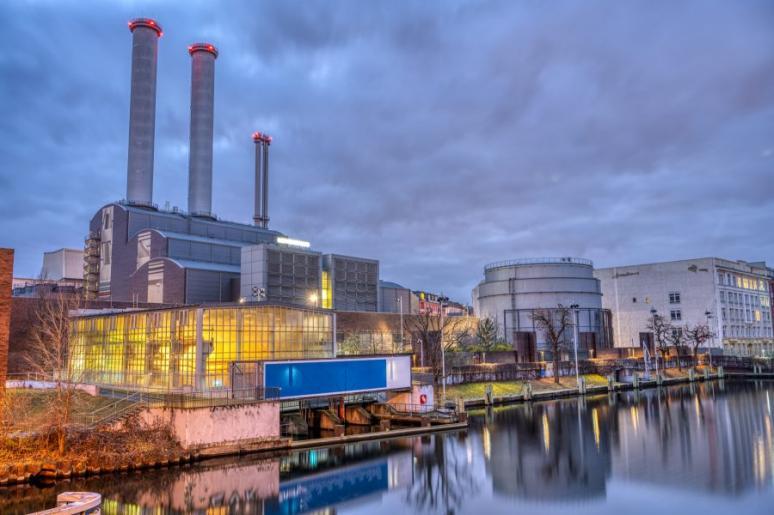
Overview of definitions
The term “industrial process gas analyzer” encompasses a wide range of technologies and equipment designed to detect and analyze gas components in industrial applications. These instruments are capable of detecting a range of gases including, but not limited to, oxygen, carbon dioxide, hydrogen sulfide, ammonia, volatile organic compounds (VOCs), and more. Depending on the needs of the application, the analyzers can be portable or fixed-mounted, allowing for continuous process monitoring.
core functionality
The core function of industrial process gas analyzers is to provide accurate and reliable measurements of gas concentrations so that industrial operations can be conducted under conditions that maximize safety and economic efficiency. They typically include a sampling system, a sensor or detector, a signal processing unit, and a data output interface. These components work together to capture data about gas components in real-time and convert this information into a form that can be used for process control and optimization.
applied value
Safety monitoring: In industries such as petrochemical, mining, and energy production, leakage or improper concentration of certain gases may lead to fires, explosions, or even pose a serious threat to the health of personnel. Through the use of gas analyzers, these dangerous gases can be detected in time for proper preventive measures to be taken.
Environmental protection: Gas emissions from industrial processes can cause damage to the environment. Industrial process gas analyzers can monitor emissions to ensure that they comply with national and international environmental standards, thereby reducing the impact on the environment.
Process optimization: By continuously monitoring gas composition, the analyzer can help engineers optimize reaction conditions, improve raw material conversion, reduce energy consumption and raw material waste, and thus increase economic efficiency.
Technical standards and norms
Industrial process gas analyzers are designed and operated by a number of technical standards and specifications that ensure the performance, reliability, and accuracy of the equipment. These standards are usually set by international standardization organizations (e.g. ISO), national governments, and relevant industry associations.
How Industrial Process Gas Analyzers Work
The core function of an industrial process gas analyzer is to identify and quantify the composition of various gases in a production process. To achieve this function, analyzers employ several different detection technologies, each with its own unique operating principles and application scenarios. Below is a detailed description of some of the commonly used technologies and how they work:
1. Infrared spectroscopy (IR)
Infrared spectroscopy is a widely used technique for gas analysis based on the absorption properties of gas molecules of infrared light at specific wavelengths. Each gas molecule, due to its chemical structure, absorbs infrared light at specific wavelengths. By measuring the intensity of these absorbed specific wavelengths of light, the type and concentration of the gas can be determined.
Working Principle: The light emitted by the infrared light source passes through the gas sample, the gas absorbs the specific wavelength of light, and the detector detects the decrease in light intensity. According to the Beer-Lambert law, the concentration of the gas is proportional to the decrease in light intensity.
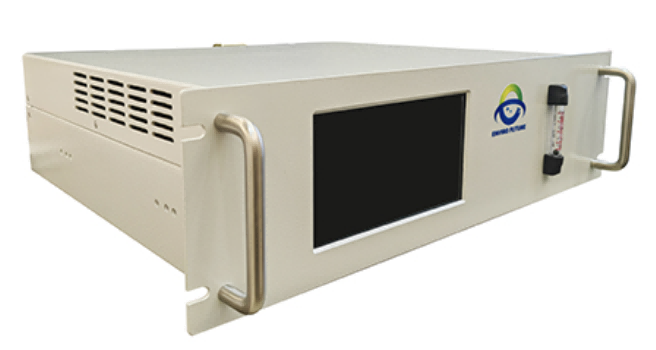
LEA300 series gas analyzer is an infrared gas analyzer independently developed by our company for environmental monitoring and industrial site emission gas analysis. The analyzer mainly measures CO, CO2, CH4 ,N2O and O2 gas concentrations, and has the characteristics of high measurement accuracy, high stability, reliability, and fast response time.
2. Ultraviolet spectroscopy (UV)
UV spectroscopy utilizes the absorption or emission properties of gas molecules in response to UV light. This method is particularly suitable for the detection of gases that are capable of absorbing light in the UV region, such as hydrogen sulfide and nitrogen oxides.
Working Principle: Similar to infrared spectroscopy, UV spectroscopy analyzes the composition of gases by measuring the change in light intensity of a gas after it has been irradiated by ultraviolet light. When a gas absorbs UV light, the amount of light absorbed is directly proportional to its concentration.
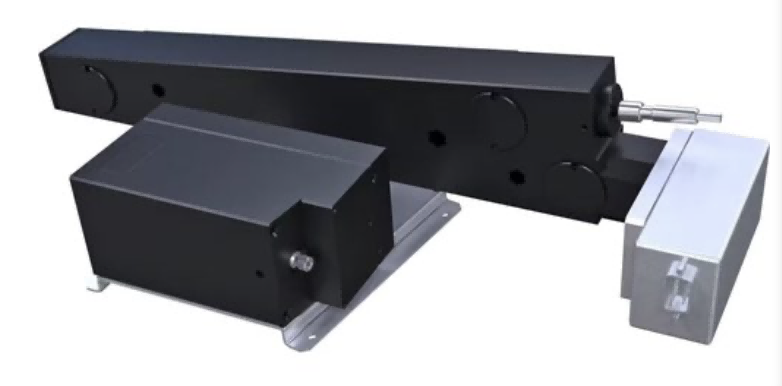
UV-GAS-100M UV-DOAS Gas Sensor is an independently self-developed flue gas analysis product that is suitable for online gas analysis of environmental protection and industrial control sites. Based on Ultraviolet Absorption Spectroscopy and Differential Optical Absorption Spectroscopy, it adopts an optical technology platform and can conduct online analysis and measurement for gases including SO2, NO, NO2, H2S, Cl2 and NH3, etc. Under normal conditions, it is used to measure gas components of SO2, NOX and other gas components can be extended. One module can simultaneously measure 5 gas components at maximum. The product owns features of high measurement accuracy and reliability, fast response, and wide application.
3. Electrochemical sensing technology
Electrochemical sensors are a technology used to detect specific molecules in gases and are commonly found in portable gas detectors. They are particularly effective in detecting gases such as oxygen, carbon dioxide, and carbon monoxide in the environment.
Principle of operation: The gas in the electrochemical sensor reacts with the electrodes to produce an electric current. The electrochemical cell inside the sensor converts chemical energy into electrical energy through this reaction, thus generating a current proportional to the gas concentration. By measuring this current, the gas concentration can be determined
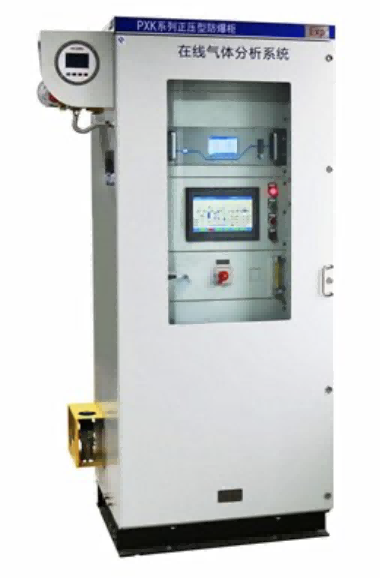
Process gas analyzers can measure the concentration of gases such as oxygen, carbon dioxide, nitrogen dioxide, methane, and many other components in a variety of process gases. Process gas analyzers are used for applications such as monitoring the emissions from industrial operations, indoor air quality management, catalyst performance evaluation, fuel cell development, and emission control systems.
Our company can provide different types of process gas analyzers, including
☑ Online Process Gas Analyzers
☑ Portable Process Gas Analyzers
☑ Extraction Process Gas Analysis Systems
☑ TDL Process Gas Analyzers
4. Mass spectrometry
Mass spectrometry is a high-precision analytical technique that determines the type and concentration of gas molecules by measuring their mass. This method is very effective in accurately controlling complex gas mixtures in industrial environments.
Principle of operation: In a mass spectrometer, a gas sample is ionized to form charged particles (ions). These ions are accelerated in an electromagnetic field and passed through a mass analyzer where they are separated according to their mass/charge ratio. The detected ion signal can be used to calculate the concentration of components in the original gas sample.
Types and Features: Diversity and Applications of Industrial Process Gas Analyzers
Industrial process gas analyzers can be classified into several types based on their design, function and application, each with its own unique characteristics and uses. Understanding the different types of analyzers and their characteristics is critical to selecting the right equipment to meet the needs of a particular industrial application.
1. Portable analyzers
- Portability: These analyzers are designed to be lightweight and portable, allowing them to be used in multiple locations or for on-site testing when needed.
- Applications: Commonly used for on-site rapid response operations such as leak detection, safety inspections, and environmental monitoring.
- Technology: Typically includes electrochemical sensors, infrared sensors, etc. to provide data quickly.
- Benefits: Easy to handle and transport. Provides test results quickly and is suitable for emergency applications.
- Limitations: Typically simpler in functionality than fixed or online analyzers and may not provide continuous monitoring over long periods.
2. Stationary analyzers
- Fixed Installation: These analyzers are fixed in a specific location in the production facility and are used to continuously monitor the gas composition of the process.
- Applications: Widely used in chemical plants, refineries, power plants, and other environments for long-term stable gas composition monitoring.
- Technology: Includes high-precision techniques such as infrared, laser spectroscopy, mass spectrometry, etc. to provide continuous and accurate data.
- Advantages: Capable of 24/7 continuous monitoring. High accuracy and reliability for complex industrial applications.
- Limitations: High installation and maintenance costs. Not usually easy to move or reconfigure quickly.
3. Laboratory analyzers
- High Accuracy: Designed for use in laboratory environments, providing the highest level of accuracy and sophisticated analytical capabilities.
- Applications: For detailed analysis of samples, e.g. for the development of new products, quality control, and environmental monitoring.
- Techniques: including gas chromatography, liquid chromatography, and mass spectrometry.
- Benefits: Provides highly accurate analytical results. Can handle complex analytical needs such as multi-component gas mixture analysis.
- Limitations: A high level of technical knowledge is required for operation and maintenance. High cost, slow operation, not suitable for immediate analysis.
4. On-line analyzers
- Real-time monitoring: Installed directly on the production line, it provides real-time data for immediate control measures.
- Applications: For locations where instant data is needed to optimize production processes and ensure safety, such as continuous manufacturing processes and power plants.
- Techniques: Techniques commonly used include infrared spectroscopy, electrochemical methods, etc. for rapid response to change.
- Benefits: Supports real-time decision-making and process control. Reduces the need for human intervention and improves automation.
- Limitations: Complicated initial installation and setup. Integration and compatibility with production systems is required.
| typology | Definitions and characteristics | Scope of Application | vintage | limitations |
| Portable analyzer | Lightweight and portable, suitable for rapid on-site testing | Leak detection, safety inspections, environmental monitoring | Easy to handle and transport; provides results quickly | Relatively simple function, not suitable for long time continuous monitoring |
| Stationary analyzer | Fixed installation for continuous monitoring | Chemical plants, oil refineries, power plants, etc. | Provides 24/7 monitoring; high accuracy and reliability | High installation and maintenance costs; not easily moved or reconfigured |
| Laboratory Analyzer | High accuracy for laboratory environments | Development of new products, quality control, environmental monitoring | Highly accurate analytical results; can handle complex analytical needs | Specialized knowledge required for operation and maintenance; costly and slow |
| On-line analyzer | Installed directly on the production line for real-time monitoring | Continuous manufacturing processes and power plants | Support real-time decision-making and process control; increase automation levels | Complex initial installation; requires integration and compatibility with production systems |
The selection of an industrial process gas analyzer depends on specific application needs, including monitoring frequency, accuracy requirements, operating environment, and budget. Understanding the features and capabilities of each type of analyzer can help companies select the equipment best suited for their specific industrial process to achieve optimal productivity and safety. When properly configured and utilized, these devices can significantly improve control of industrial processes, reduce risk, and increase overall efficiency.
Areas of application: key players in industrial process gas analyzers
Industrial process gas analyzers play a vital role in several industries, from ensuring production safety to environmental protection to optimizing process and product quality. Below we explore in detail the specific uses and contributions of these devices in different applications.
1. Petrochemical industry
Application Note: In the petrochemical industry, gas analyzers are used to monitor and control chemical reaction processes such as cracking, catalysis, and synthesis to ensure that the reaction proceeds according to the intended path.
Used to detect combustible and toxic gases, such as hydrogen sulfide and benzene, to prevent explosions and poisoning accidents and ensure workplace safety.
Technical application: Detection and quantification of chemicals in process streams using infrared and ultraviolet spectroscopy. Adjustment of production parameters in real-time through an online monitoring system to improve energy efficiency and product quality.
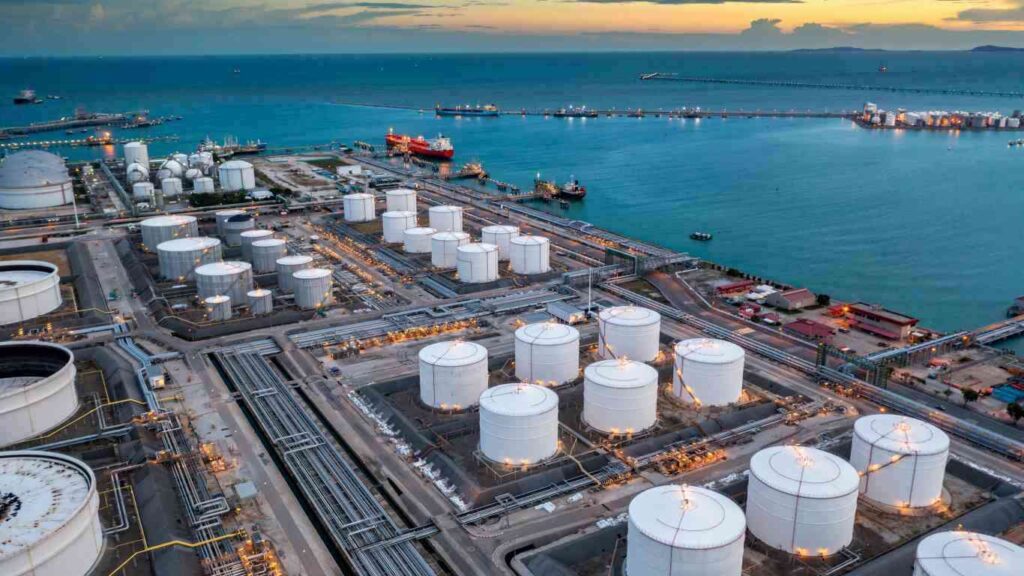
2. Environmental monitoring
Application Note: Gas analyzers are used in environmental monitoring for continuous monitoring of industrial emissions, including pollutants such as sulfur dioxide, nitrogen oxides, and volatile organic compounds.
Helps companies avoid fines and legal liabilities by ensuring that emissions comply with environmental regulations.
Technical applications: Mass spectrometry and electrochemical techniques are used to accurately measure low concentrations of contaminants.
The data can be used for environmental impact assessments and the development of more stringent emission control policies.
3. Pharmaceutical industry
Application Note: In pharmaceutical processes, gas analyzers are used to monitor critical parameters in the production environment and processes, such as oxygen, carbon dioxide, and ammonia, to ensure product quality and safety.
Used to control contamination levels in production environments, such as gas purity in aseptic operating rooms.
Technical application: Gas detection in sterile environments using laser spectroscopy and infrared technology.
Analyzer data supports stringent quality assurance procedures and compliance with Good Manufacturing Practice (GMP) requirements.
4. Energy industry
Application Note: In power generation and natural gas processing, gas analyzers are used to monitor combustion efficiency and control emissions, e.g. by monitoring oxygen and carbon monoxide concentrations during combustion processes.
Optimize the combustion process to reduce energy waste and lower emissions.
Technology application: Real-time monitoring of gas composition during combustion using electrochemical and infrared sensors.
Automatically adjusts gas supply and combustion conditions to improve thermal efficiency and environmental performance.
5. Food and beverage industry
Application note: Gas analyzers are used in food and beverage production to monitor the composition of gases in packages, e.g., the ratio of oxygen to carbon dioxide in fresh packaging. Ensuring the freshness of food products and extending their shelf life.
Technical application: Monitor gas mixing ratios during the packaging process using portable or in-line gas analyzers. Ensure consumers receive consistent quality products and improve brand reputation.
Industrial process gas analyzers demonstrate their indispensable role in modern industry through their diverse applications. From ensuring industrial process safety and environmental protection to optimizing product quality and productivity, these devices are becoming increasingly important. In the future, it is expected that the use of these analyzers in various industries will further expand and deepen as technology advances and environmental requirements increase.
Challenges and Future Trends
While industrial process gas analyzers excel in many ways, they still face several challenges, including:
Rapidly updating technology: With new technology constantly emerging, equipment needs to be constantly updated to remain competitive.
- High maintenance costs: Precision equipment requires regular maintenance and calibration, increasing operating costs.
- Impact of environmental factors: Extreme weather and contaminants may affect analyzer performance and accuracy.

With the continuous progress of industrial automation and intelligence, the future development trend of industrial process gas analyzers will focus on the following aspects:
- Integration and Intelligence: More sensors and data analytics will be integrated into a single device, enabling higher levels of automation and intelligent decision-making.
- Remote monitoring technology: With the help of Internet technology, remote diagnosis and maintenance can be realized to reduce on-site workload.
Environmental protection and energy saving: pay more attention to environmental performance, and develop analyzers with low energy consumption and low emission.
Conclusion
Industrial process gas analyzers are an integral part of modern industry, and they help companies achieve their goals of efficient, safe, and environmentally friendly production. As technology continues to evolve, future analyzers will become smarter and more efficient, better serving industrial production around the world. Through continuous technological innovation and application expansion, industrial process gas analyzers will continue to play an important role in improving industrial production efficiency and environmental protection.




